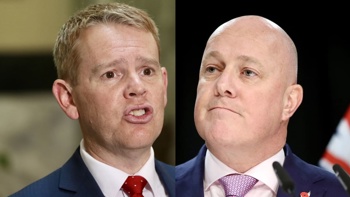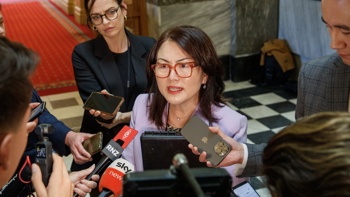Young foreign students looking for somewhere to study are mostly giving New Zealand a miss, a new survey has found.
The global survey of 77,000 would-be international students by Melbourne-based QS Enrolment Solutions has found that the 5263 students enquiring about NZ universities were significantly older then average.
Only 25 per cent of those interested in New Zealand were under age 24, compared with 50 per cent of those enquiring about Australia.
Indian student Divya Kataria, the AUT Students' Association's international officer, says a major reason is that New Zealand charges undergraduates full-cost fees of about $33,000 a year but lets doctoral students study at the same price as domestic students - about $7000 a year.
"The two big factors are the fees and the cost of living in Auckland and the big Australian cities like Sydney and Melbourne," she said.
Kataria herself is only 22 and studied in Lithuania before coming to New Zealand. She said most continental European countries charged overseas students only about €3000, or about NZ$6000.
/arc-anglerfish-syd-prod-nzme.s3.amazonaws.com/public/N2VBGQAZGVAA7FSDXMYJ5ZAONQ.jpg)
Divya Kataria, pictured making a presentation to other AUT students, studied in Lithuania before coming to NZ. Photo / Supplied
She then tried to get into an Italian polytechnic to study architecture but the entrance exam was in Italian, so she looked for an English-speaking country. She ended up doing construction engineering at AUT.
"I applied to NZ and Australian universities and chose AUT because of their reputation and their ranking," she said.
"As international officer, most of the students I deal with are over 25. Some people are actually 30 or 35. They come for their second PhD or their second masters."
The QS survey relied on people enquiring to study overseas being referred to the survey website by the institutions they enquired to. It was heavily weighted to Australian institutions, which referred 36,912 of the 77,000 students in the sample.
"Most of the universities that we have a relationship with are in Australia," said the company's market research manager Chris Strods.
The survey has been running for some years but this is the first time QS has produced a separate report for New Zealand.
The sample who responded was not representative of overseas students who actually come to New Zealand. Although China is the top overseas student market for both Australia and New Zealand, responses from China were only third in the Australian sample and fifth in the NZ sample, perhaps because of the language barrier.
Instead, most responses for both countries came from India, followed in New Zealand's cases by Nigeria, Pakistan, Ghana and China.
Universities NZ chief executive Chris Whelan said most inquiries from Nigeria, Pakistan and Ghana came to nothing.
"We get a ton of enquiries from Pakistan and Nigeria but none of those are going to get visas, it's just so hard to get them cleared," he said.
He said the survey results appeared to be driven by the responses from India. Auckland University international director Brett Berquist said a majority of Indian overseas university students globally were postgraduate, but Australia had done better at attracting Indian undergraduates.
Conversely, he said, New Zealand had done better at attracting doctoral students since they were allowed to pay domestic fees in 2006, a taxpayers' subsidy which was budgeted to cost $50 million in the year to June.
"We have traditionally been drawing a much higher percentage of international students in the PhD cohort than Australia," he said.
"I think that will shift over time, as the Australians are really focusing on PhDs, with A$200m in government scholarships going into Australian universities for PhDs."
At the same time, NZ universities are now making a stronger marketing push to attract Indian undergraduates and Berquist said Auckland University had achieved 40 per cent growth in Indian student numbers in the past three years.
Take your Radio, Podcasts and Music with you









